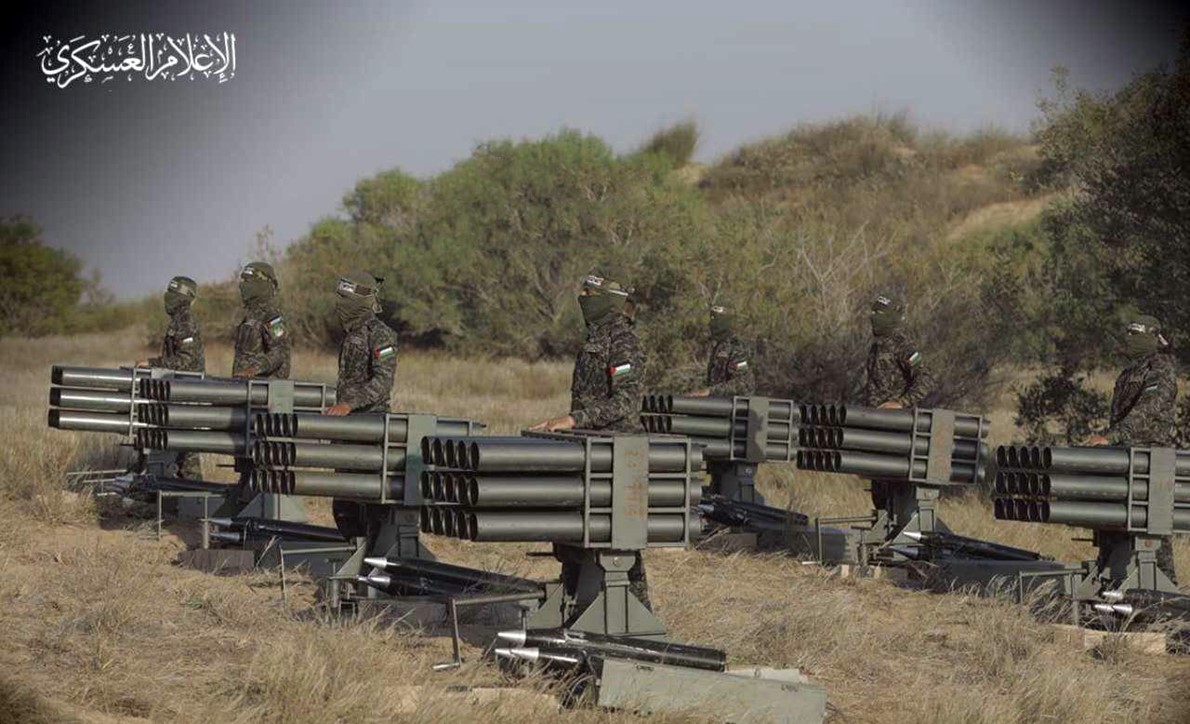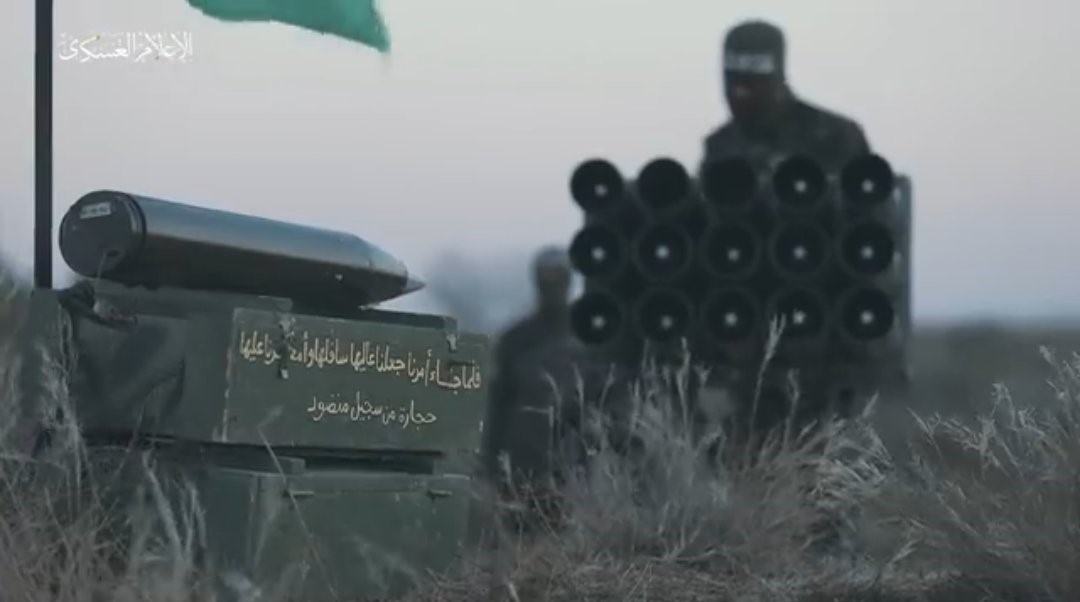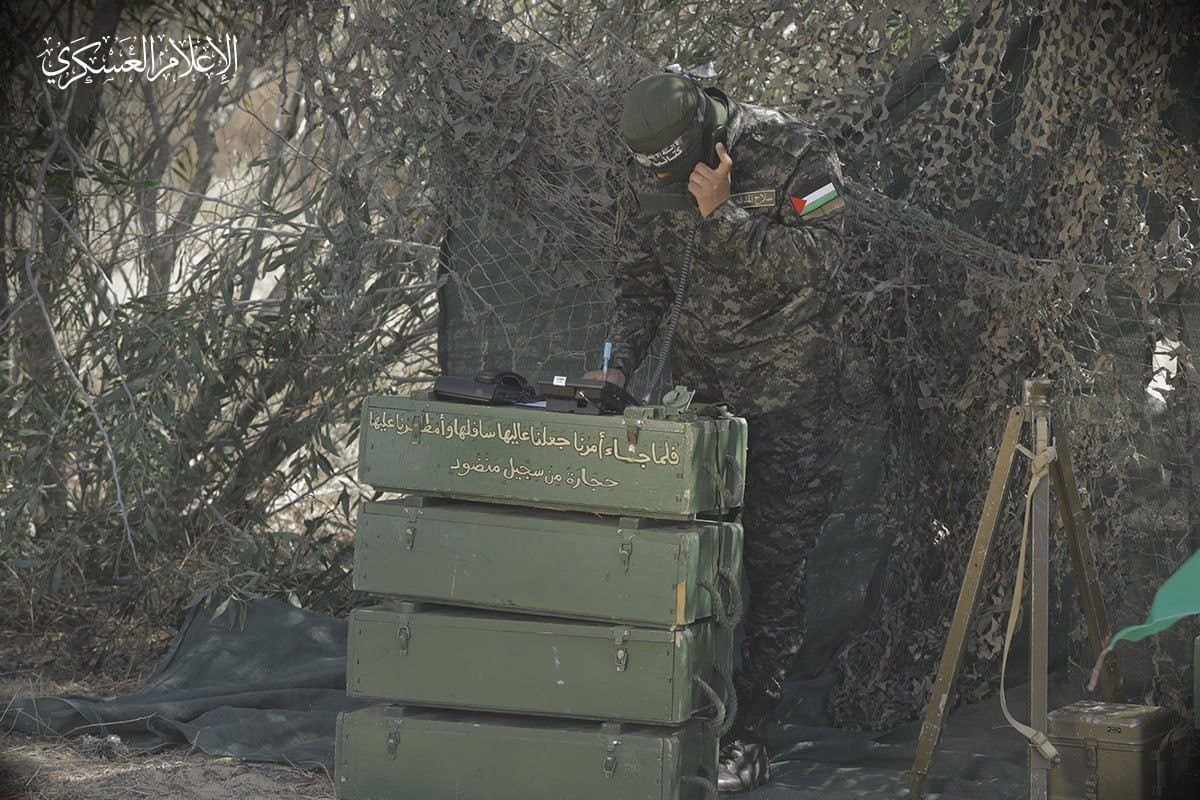GAZA
— During the last week of November and the first week of December, Al-Qassam
Brigades, the military wing of Hamas announced on their Telegram channel, that
its homemade 114mm short-range “Rajum” missile systems which were used to
target approximately ten specific areas in the occupied territories. Most of
these areas were military bases surrounding the Gaza Strip, such as the
"Ra'im" military base, the "Third Eye" site,
"Nirim," "Amitai," "Kissufim," and others.
اضافة اعلان
Simultaneously,
stones were also used to target Israeli Occupation Forces (IOF) concentrations
in areas east of Deir al-Balah and northwest of Gaza City. Notably, this system
was previously employed in preparation for Operation "Al-Aqsa Flood" to
cover the crossing of resistance fighters into the occupied territories.
This
underscores two key impressions, Jo24 reported: the resistance can effectively
diversify the use of its artillery for various missions, and it possesses a
considerable number of these systems, capable of striking areas around the
entire Gaza border, not just the north.
What is "Rajum"?
While
Al-Qassam Brigades did not disclose extensive information about
"Rajum." What is known is that it is a 114 mm short-range rocket
artillery system. The caliber of the shell typically indicates the diameter of
the shell itself and serves as a measure of the inner diameter of the artillery
piece's tube. This diameter provides information about the mass of the warhead
carried by the projectile, ranging between two to three kilograms, with some
variation.
From
its external appearance, the Rajum system seems to be a multiple rocket
launcher—a type of unguided rocket artillery primarily designed to offer direct
fire support to ground forces and to destroy various sources of enemy fire and
positions.

The
system comprises three separate rows, each with five tubes, sharing structural
similarities with a well-known Chinese system—the "Type 63" multiple
rocket launcher with 12 tubes and a diameter of 107 mm. This Chinese model,
originating from the early 1960s, remains famous globally and serves as a basis
for the Rajum, with modifications to enhance firing rate and projectile
diameter.
While
the Type 63 is no longer active in Chinese infantry units, it is still utilized
by specialized formations, emphasizing the significance of this technology. Its
light, maneuverable, and easy-to-control nature makes it suitable for mountain
infantry units and special forces engaged in battles with short ranges,
especially in challenging terrains. This is a characteristic that sets Rajum
apart in the context of Gaza.
Through
a closer examination of the targeted sites, it becomes evident that the Rajum
system reaches multiple ranges with its fire, extending up to approximately 8
or 9 kilometers. Its ease of movement allows specialized artillery teams to
position themselves in specific areas, launch a batch of missiles, and then
relocate to another area, creating a continuous cycle. Although the rocket
barrages are fired at a relatively slow rate, as seen in Qassam's video
(approximately one rocket every two to four seconds), the intensity of the
barrage is amplified by a large number of these systems.

One
advantage of this type of multiple rocket launcher is its versatile use mechanisms.
It can be employed directly on the ground, featuring two wheels for mobility
(as in the case of Rajum), or mounted on an armored vehicle or a relatively
equipped transport vehicle. Consequently, it remains in use in several
countries, including Iran (using a version similar to the Chinese Type 63,
named "Fajr-1"), Egypt (with the developed "RL812/TL"
model), Turkey, Albania, Vietnam, and Cambodia.
Technical superiority does not
equate to military dominance
While
IOF has more accurate and powerful missile launchers, such as the
"M270" missile launcher and the "LAR-160" system, technical
superiority does not necessarily equate to military dominance in asymmetric
wars. In such conflicts, where forces with varying equipment strengths confront
each other, the technically weaker party often employs tactics to maximize its
tools' effectiveness while minimizing the enemy's tools. This dynamic helps
balance forces in specific battles.
For
instance, urban warfare compels occupation soldiers to abandon their armor and
search homes, providing an opportunity for the more familiar resistance to
strike forcefully through direct clashes, sniping, or explosive devices. This
was observed during the initial days of December.
This
is where the Al-Qassam Brigade artillery forces come into play, divided into
two primary components: mortar forces and forces operating rocket launcher
systems. Both serve as effective artillery weapons for short-range targets that
conventional artillery may struggle to reach.
This
capability proves particularly useful in the case of a ground invasion, where
distances between the attacker (occupation) and the defender (resistance) are
short. Additionally, in the Gaza enclave, the intensified fire represents
substantial pressure, complementing the missile barrages directed at other
areas within the occupied territories.

The
lightweight and swift mobility of Rajum, a characteristic shared with other
multiple rocket launchers, becomes a significant strength for the resistance.
The unfamiliarity of the enemy with Gaza's terrain leads to sudden and diverse
attacks from various areas. In asymmetric wars, where a less-equipped
resistance confronts a regular army with a significant technological advantage,
hit-and-run strategies help equalize forces in specific battles.
Israeli target falls
An
essential point in this context is that decisive victory is not the primary
objective in these battles. Instead, the goal is to prolong the conflict,
influencing the political decisions in Tel Aviv, the United States, and other
influential capitals. This becomes especially crucial with the introduction of
additional elements into the battle, such as the issue of prisoners.
In
a research paper titled "Why Big Nations Lose Small Wars," published
in World Politics in 1975, Andrew Mack, an assistant professor at the School of
International Studies at Simon Fraser University, emphasizes the role of
"determination" as a crucial factor in asymmetric wars. Determination
refers to the relative interest of the fighting forces and plays a significant
role in explaining success or failure in such conflicts. The bottom line is
that the side with greater resolve prevails, regardless of the difference in
material power resources.
Mack
notes a paradox: as the relative power gap widens between the two parties
(resistance and occupation), the stronger party tends to be less determined and
resolute. Conversely, the weaker parties, despite technical and numerical
disadvantages, exhibit higher determination and resolve. This is because the
battle holds paramount importance for them. In essence, major armies may lose
small wars due to tense political situations compelling them to withdraw
without achieving a decisive military victory.
This
model aligns with the ongoing war in Gaza. Examining the previously declared
Israeli goals—to annihilate Hamas, free prisoners, and control Gaza—it becomes
evident that not all objectives have been achieved. The occupation is currently
adjusting its goals within Gaza to navigate the challenges encountered during
the ground invasion.
Moreover,
the Israeli interior is experiencing heightened political turbulence, with
global demonstrations condemning unprecedented aggression against innocents.
The beginning of unrest in the strong political bond between the West and
Israel indicates a shift in favor of the resistance. Despite possessing
relatively small weapons, the unyielding determination of the resistance
becomes a crucial factor.



